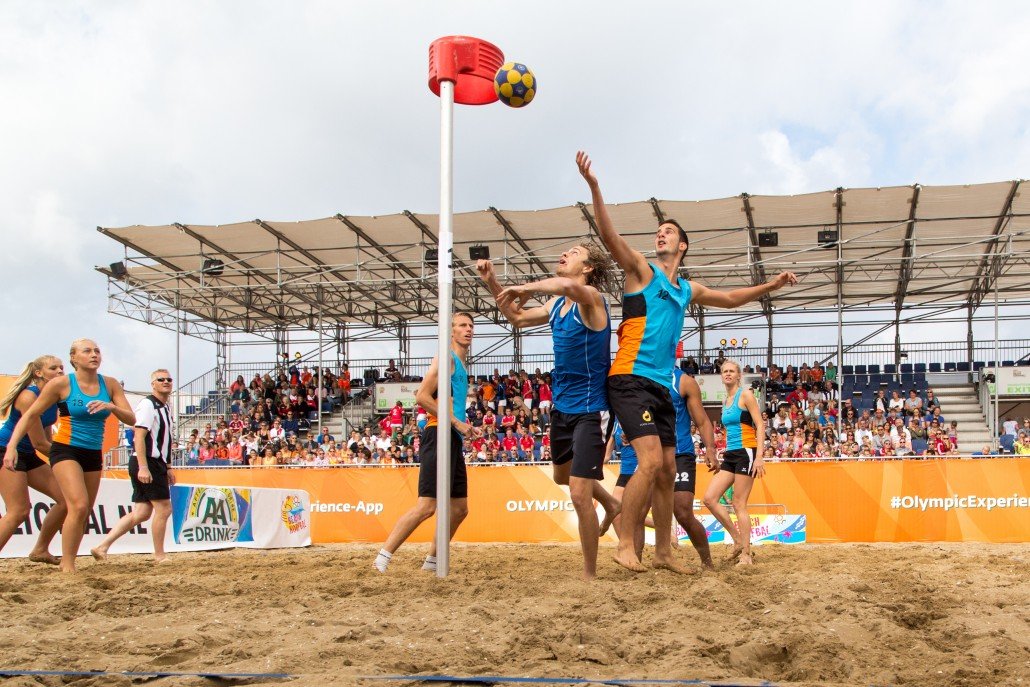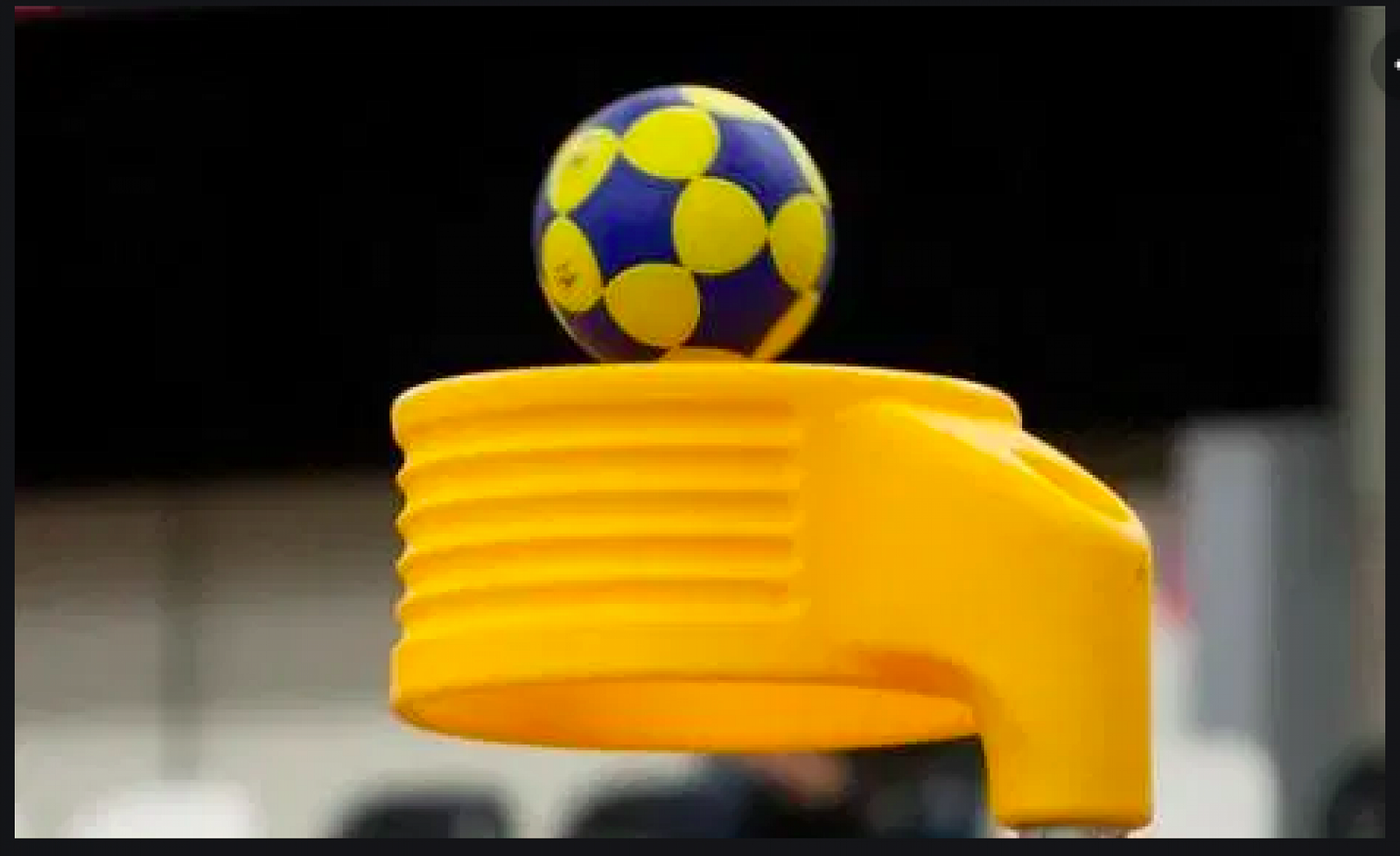Understanding korfball starts with understanding the language used on the pitch. From tactical instructions to referee decisions, these terms are the foundation of clear communication in the game. This guide breaks down the most important words and phrases every new or developing player should know. In this expanded guide, we’ll cover not just the terms, but their context, how they’re used in match play, and how developing fluency in this terminology can help you become a better player.
What is the korf?
The korf is the basket used in korfball. It stands 3.5 metres high with no backboard and is the target for scoring goals. Unlike basketball hoops, the korf is designed to encourage movement and technical accuracy since there’s no surface to bounce the ball off.
Why is the korf important to gameplay?
The placement of the korf allows attacking players to shoot from 360 degrees. This opens up the space and ensures defenders must remain alert at all angles, making the game more dynamic. The korf’s height challenges players to develop a strong shooting technique.
What is the pitch layout in korfball?
The pitch measures 40 metres by 20 metres and is divided into two equal zones or divisions. Each team has four players in each zone, and these zones rotate after every two goals. This layout ensures balance and promotes equal involvement from all players regardless of gender or role.
Korfball court markings
- Halfway line: Splits the court into two zones.
- Centre circle: Used at the start of each half or after a goal.
- Free pass spot: Marked spots around the korf for restarting play.
- Penalty spot: The location from which penalty shots are taken.
What do ‘attack’ and ‘defence’ mean in korfball?
Four players are attackers and four are defenders at any given time. After every two goals, teams switch roles and ends, so all players take turns in both roles. This rotational structure is unique to korfball and encourages well-rounded development.
Attacking phase
- Objective: Maintain possession and attempt a high-percentage shot.
- Requires: Communication, spacing, feeding, dodging, and support.
Defending phase
- Objective: Prevent scoring, force low-quality shots or turnovers.
- Requires: Marking, anticipation, positioning, and rebounding.
Key attacking terms in korfball
Feed
The player positioned near the korf who helps set up shooting opportunities. A good feed must be stable, aware of passing options, and quick to reposition based on defensive pressure.
Collect
A player whose role is to win the rebound after a shot. This is often a tall, strong player with good timing and spatial awareness.
Dodge
A sharp movement to get free from a defender and receive a pass or shoot. Often combined with fakes or changes of pace.
Rebound
Gaining possession after a missed shot. Rebounding well allows a team to extend their attacking sequence.
Support
Offering a passing option for the teammate in possession. Good support means anticipating the next move and staying one step ahead of the defence.
Cut
A sudden change of direction used to find space. Horizontal and diagonal cuts are both used depending on team tactics.
Pop pass
A quick, short pass used to maintain attacking flow. This is especially useful near the korf where space is tight.
Screen
Blocking a defender to help a teammate get open. Legal screening involves body positioning without physical contact that would result in a foul.
Key defending terms in korfball
Marking
Tracking an opponent closely to limit their effectiveness. Good marking disrupts timing and makes it harder to receive the ball.
Front defence
Positioning between the attacker and the korf to block passes or shots. Requires strong footwork and anticipation.
Cover defence
A secondary defender who provides support or steps in if the primary defender is beaten. This role demands strong communication and quick decision-making.
Zone defence
Less common than man-to-man, this strategy covers areas rather than individuals. It’s useful when facing teams that rely on one or two dominant players.
Other common match terms
Shot clock
Teams have 25 seconds to attempt a shot. If they fail to do so, possession switches to the other team. This ensures tempo and discourages passive play.
Free pass
Awarded for minor fouls. A static attacking play resumes from a marked point, typically with a single pass allowed before movement resumes.
Penalty shot
Given for serious fouls. One attacker takes a shot without interference, similar to a penalty in football or a free throw in basketball.
Referee ball
A neutral restart used when there’s uncertainty about possession or after simultaneous infringements.
Violation
Any breach of the rules resulting in a change of possession or restart. Common examples include travelling, defended shooting, or contact fouls.
Substitution
Rolling substitutions are allowed in many leagues, giving teams tactical flexibility.
How does terminology affect team communication?
Clear communication is key in korfball, especially with mixed-gender teams and quick switches between attacking and defending roles. Shared language helps avoid confusion, speeds up decision-making, and strengthens team cohesion.
The role of the coach in teaching terminology
Coaches introduce and reinforce these terms from the first training session. Clear explanations, consistent usage, and visual aids all help players adopt terminology faster. Drills that incorporate verbal cues improve both understanding and execution.
Using terminology in match analysis
Video analysis, stat tracking, and tactical reviews all depend on consistent terminology. Whether it’s discussing “feeds,” “cuts,” or “rebounds,” shared language ensures everyone is on the same page.
Learning korfball terms as a beginner
The best way to learn is through immersion. Attend sessions, watch games, ask questions, and keep a glossary. Most players pick up the language naturally within a few weeks of regular training.
Glossary: Full list of korfball terms
- Korf
- Feed
- Collect
- Dodge
- Rebound
- Support
- Cut
- Screen
- Pop pass
- Marking
- Front defence
- Cover defence
- Zone defence
- Shot clock
- Free pass
- Penalty shot
- Referee ball
- Violation
- Substitution
Final thoughts on korfball terminology
Mastering korfball terminology is not just about knowing words – it’s about understanding your role, improving communication, and playing smarter. Whether you’re just starting or coaching a team, building fluency in korfball’s language will enhance every part of your game.



